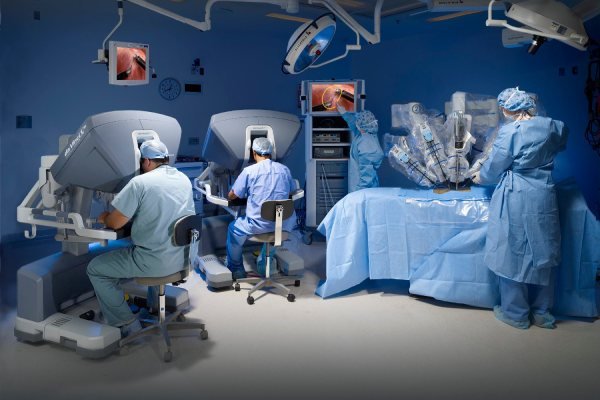A major global health concern for males is prostate cancer. Numerous instances are diagnosed every year, making it the second most frequent cancer in men. Though they get the job done, traditional surgical treatments aren’t without their risks and problems.
Robotic surgery, a game-changing innovation, has changed the game for prostate cancer therapy, though, thanks to technological breakthroughs in medicine. Discover the ins and outs of robotic surgery for prostate therapy, including its advantages, disadvantages, and potential for the future, in this detailed essay.
A Comprehensive Guide to Prostate Cancer
The little, walnut-shaped gland that men have and which secretes seminal fluid is the origin of prostate cancer. The disease usually moves at a snail’s pace and stays localized to the gland. The key to effective therapy is early discovery by screening tests including digital rectal exams (DRE) and prostate-specific antigen (PSA) testing. The stage of cancer determines the treatment options, which might range from radiation therapy and active surveillance to surgical treatments.
The da Vinci Surgical System and other forms of robotic surgery have revolutionized the way prostate cancer is treated. This minimally invasive technique first appeared in the early 2000s, and it relies on sophisticated robotic technology to let surgeons execute intricate surgeries with utmost control and accuracy. A high-definition 3D vision system, a robotic arm-equipped patient-side cart, and a surgeon’s station make up the system.
The Process of Robotic Prostate Surgery
The robotic arms with miniature surgical tools are controlled by the surgeon from a control panel during robotic prostate surgery. The surgeon is able to observe minute details with remarkable clarity thanks to the 3D vision system’s magnified, high-resolution image of the operating field. As the surgeon moves their hands, the robotic arms replicate their movements, allowing the instruments to be precisely and precisely scaled down within the patient’s body.
The robotic-assisted laparoscopic radical prostatectomy (RALRP) is the main technique treating prostate cancer. The entire prostate gland and some lymph nodes and surrounding tissue are removed during this procedure. When compared to conventional open surgery, robotic surgery has many advantages, the most notable of which are improved precision, less blood loss, and less scarring.
How Robotic Surgery Can Help With Prostate Issues
1. Minimally Invasive Approach: Robotic surgery minimizes body harm by performing procedures through small incisions. With this less intrusive method, patients have less discomfort and a quicker recovery after surgery.
2. The robotic system provides:A high level of precision, enabling surgeons to execute delicate procedures that would be difficult to accomplish with traditional methods. Maintaining nerve function and reducing the likelihood of problems depend on this level of accuracy.
3. Robotic surgery is less intrusive than traditional surgical procedures: which means less blood loss and a lower risk of infection. In addition, the likelihood of postoperative infections is reduced with smaller incisions.
4. Benefit of robotic surgery: Is that patients usually have a shorter hospital stay and a faster recovery period. Both the patient’s quality of life and healthcare expenditure are enhanced by this.
5. Enhanced Cancer Control: Research has demonstrated that robotic surgery for prostate cancer provides rates of cancer control that are on par with, or even higher than, those of conventional surgery. In order to improve long-term results, it is important to remove the prostate and afflicted tissues precisely.
Difficulties and Restrictions
Robotic surgery has many benefits, but it also has certain drawbacks. Surgeons face a steep learning curve, which is a major concern. A great deal of practice and instruction is necessary to become an expert user of the robotic system. Robotic surgery is more costly than traditional approaches because of the costly equipment and upkeep required.
A further drawback is that there is no physical feedback. Surgical procedures are often hindered by the fact that surgeons depend on visual signals instead of tactile ones. Additionally, patients in certain areas may not have access to robotic devices because not all institutions possess them.
Conclusion
With its minimally invasive, precise, and effective approach, robotic surgery has completely changed the game when it comes to tratar el cáncer próstata. Although there are still certain obstacles, the benefits of operations aided by robotics are clear. Robotic surgery is already showing great promise in the treatment of prostate cancer, and it will play an increasingly important role in the future as technology improves.





Your point of view caught my eye and was very interesting. Thanks. I have a question for you.
I am really inspired along with your writing skills as smartly as with the format for your blog. Is that this a paid topic or did you modify it yourself? Anyway keep up the excellent high quality writing, it is uncommon to look a great blog like this one nowadays!
hgh online kaufen
References:
ematixglo.com
strongest muscle building supplement at gnc
References:
legal over the counter steroids [https://aryba.kg/]